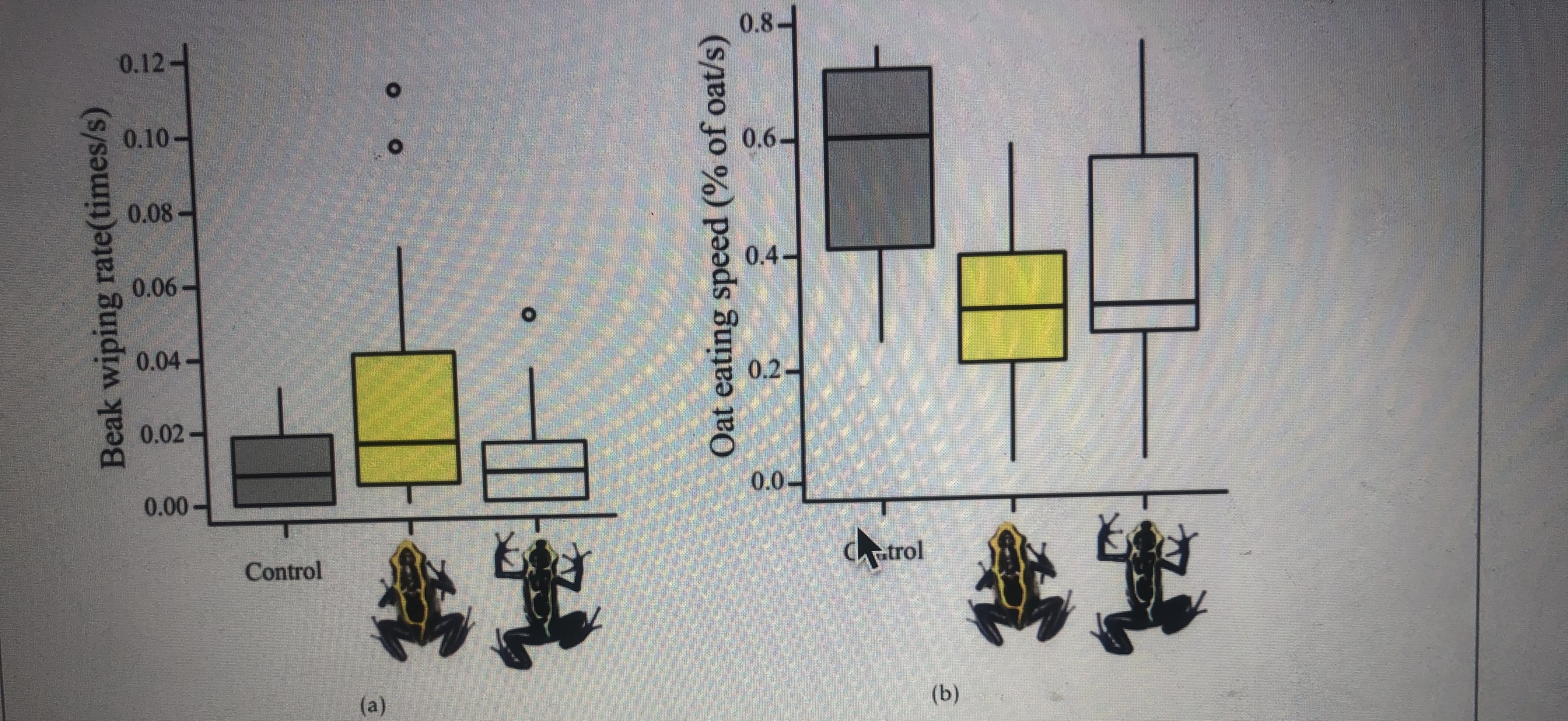Question
Poison dart frogs are known for secretive bitter toxins in their skin that can cause swelling, paralysis, and even death. Natural predators such as birds
Poison dart frogs are known for secretive bitter toxins in their skin that can cause swelling, paralysis, and even death. Natural predators such as birds have come to associate the distinctive markings of poison dart frogs with danger. Researchers are interested in studying two populations of poison dart frogs, native to French Guinea, one with distinctive yellow markings and another with white markings instead of yellow.
Past research has shown that white is not an effective warning color compared to warm colors like yellow, orange, and red. Researchers hypothesized that perhaps white-striped frogs compensate for their less threatening markings by being especially toxic. Researchers conducted a trial to assess whether the white-striped frogs might be more distatesful than the yellow-striped frogs.
The figure below summarizes the result of two experiments in which birds were randomized to one of three feeding groups. In the experimental groups, birds were given oats containing skin extracts from either yellow-striped or white-striped frogs. In the control group, birds were given oats without skin extracts. In one experiment, researchers measured the rate at which birds wiped their beaks (an aversive response that indicates dislike). In the other experiment, researchers measured how quickly birds ate the oats.
Based on the plots, what are the major conclusions from the experiments? Did the data seem to support the researchers hypothesis that white-striped frogs might be more distas

Step by Step Solution
There are 3 Steps involved in it
Step: 1

Get Instant Access to Expert-Tailored Solutions
See step-by-step solutions with expert insights and AI powered tools for academic success
Step: 2

Step: 3

Ace Your Homework with AI
Get the answers you need in no time with our AI-driven, step-by-step assistance
Get Started


